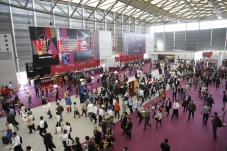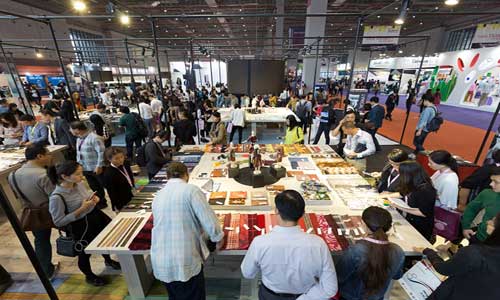FW
India’s factory activity slumped to its lowest level in more than nine years in July, dragged down by disruptions to business activity following the launch of GST. July also marked the biggest month-on-month decline since November 2008, just after the collapse of Lehman Brothers triggered the global financial crisis.
The GST came into effect on July 1. It is India's most ambitious tax overhaul and is meant to unify the economy into a customs union. But ambiguous rules and a multi-rate tax structure have left firms confused on how to price their products, hurting sales. While some businesses have protested against the new sales tax, many are struggling with the new compliance requirements that require them to file at least three returns every month. Some companies see the disruptions lasting until December, which could dent near-term growth. Asia's third-largest economy grew 6.1 per cent in January-March, fast by global standards but its slowest in over two years. It will take time for businesses to adjust to the change in the tax system. An output sub-index fell to 46.3, its lowest since early 2009, from 51.7 in June. There was also a contraction in new orders.
In 2017-18, world cotton production is projected to increase by eight per cent due to an eight per cent expansion in world cotton area. India is expected to remain the world’s largest producer with output increasing six per cent. China’s production is projected to rebound by seven per cent. Production in the United States is expected to rise by ten per cent and cotton area is expected to expand by 18 per cent. After two seasons of contraction, better expected returns for cotton encouraged farmers to expand cotton area in Pakistan by nine per cent. Pakistan’s production is projected to increase by 17 per cent. Cotton production in Brazil is forecast to increase by five per cent.
World cotton consumption in 2017-18 is forecast to rise by two per cent. A modest one per cent increase is projected for China, the world’s largest cotton consumer. Consumption in India is forecast to increase by two per cent. Pakistan’s mill use is expected to rise by four per cent. Consumption in Bangladesh is projected to rise by five per cent.
World cotton trade is projected to decline by one per cent. While the United Sates is expected to remain the world’s largest exporter, its exports are nevertheless forecast to decrease by eight per cent. India’s exports are forecast to rise by two per cent and Australia’s exports by eight per cent. Bangladesh, Vietnam and China are expected to remain the world’s three largest importers.
Average cotton prices over the first six months of 2017 were 19.48 per cent higher than the first half of 2016. However, expectation is that cotton prices will tumble next season to the lowest in nine years. While Indian and Chinese cotton production remained stable after suffering a dip in 2014 and 2015 respectively, both are starting to show signs of stabilisation. In the same period, the US substantially grew its production, with Pakistan showing the most sustained growth over the past four years.
Since 2014, world’s cotton production has stalled, decreasing from 26.2 million metric tons to this year’s 22.5 million metric tons registered in June 2017 and 25.1 million metric tons as of July 2017. After five years of supply surpassing demand, production has fallen below consumption. At the end of the 2014-15 season, the world stock-to-use ratio stood at 0.89 (this is a key indicator showing available stocks were sufficient to cover almost eleven months of mill use.) Everything points to a long-lasting surplus of cotton worldwide which is made to push prices down.
Even with large reductions in 2015-16 and 2016-17, world stocks at the end of the current crop year are expected to be about 50 per cent higher than they were in the mid-2000s.
Asia Pacific is the largest region in terms of online retail sales, containing both the largest market, China, and the fastest growing, India. The region's total online retail sales in 2021 are expected to account for about one-fifth of total retail sales. By 2021, China would be the first trillion-dollar market, while also accounting for 80 per cent of all e-commerce sales in the Asia Pacific market. Overall, the largest online category is apparel, followed by consumer electronics and computers.
India has 460 million e-commerce customers and is also the world's second largest market for smart phones. Products that sell well elsewhere are not necessarily the best performers in India, with electronics, home ware, apparel, makeup and toys the five most in-demand categories. The market is also dominated by cash or cash-on-delivery transactions, which together account for 62 per cent of all online purchases.
In India the sector has had to contend with several significant obstacles, including legal impediments, a slowdown in venture capital funding, insufficient logistics resources and slow growth in the number of online buyers.
Retail remains largely commoditised within the Asia-Pacific region as well as being primarily dictated by price. In terms of building customer loyalty, discounts and frequent buyer incentives and loyalty programs are the most effective forms of long-term client retention.
"Dominated by three giants, all European — LVMH Moët Hennessy Louis Vuitton, Kering and Richemont, the global luxury market is up for a major upheaval with the American brands proving their mettle. Coach and Michael Kors are planning to shift their global positioning and this in a way is touted as the major reshuffle for luxury industry. Kors plans to buy the upmarket London-based shoemaker Jimmy Choo for $1.2 billion. It declared the deal to be the beginning of a makeover that would turn an ailing American single-brand accessories business into a multilabel global fashion and luxury behemoth."

Dominated by three giants, all European — LVMH Moët Hennessy Louis Vuitton, Kering and Richemont, the global luxury market is up for a major upheaval with the American brands proving their mettle. Coach and Michael Kors are planning to shift their global positioning and this in a way is touted as the major reshuffle for luxury industry. Kors plans to buy the upmarket London-based shoemaker Jimmy Choo for $1.2 billion. It declared the deal to be the beginning of a makeover that would turn an ailing American single-brand accessories business into a multilabel global fashion and luxury behemoth.
The deal happened two months after Coach’s $2.4 billion acquisition of Kate Spade. Coach, Kors’ biggest competitor, has also publicly promoted its ambitions to build itself into a new American multibrand accessible luxury organization, as per CEO Victor Luis. There seems to be a major consolidation happening with so many brands merging together or joining hands.

While discussion in the fashion world has centered on the need to support new designers, rather than revive older names, Idol said Kors was not interested in emerging faces but rather those with “some longevity” that “may need to have a structure to accelerate their growth.”
John Idol, Chairman and Chief Executive, Michael Kors Holdings, said in an interview Kors was considering only ‘one or two more acquisitions’ for now, and had no plans to reach the size of LVMH, which has more than 50 brands in its portfolio. But he added he had great admiration for the French group’s long-term approach to brand building. First, we are really going to look at luxury companies. Second, we are going to look at companies that lead in style and trend. The third requirement was for companies with ‘some size and scale’ and ‘some heritage’, he added.
Game of acquisitions
There are many possibilities for acquisitions. Analysts have pointed to accessories brands like Furla in Italy and Longchamp in France; both are family-owned businesses with strong growth records and established consumer appeal across continents and generations. Burberry, Britain’s largest luxury brand by sales was being considered a Coach takeover target before the Kate Spade deal struck. Mulberry, another British heritage brand, has also been mentioned by bankers in the sector, as have Hunter and Barbour.
Experts say, the timing of potential expansion is significant. The luxury landscape is in a flux — mall and department store traffic has fallen, consumer shopping habits are changing, and online retailers, notably Amazon, appear to be major threats. Other brands, like Ralph Lauren and Marc Jacobs, have opted to cut costs, close stores and fold multiple lines into a single offering.
At the same time, Coach and Michael Kors, are going in a more expansive direction. With acquisitions, they can gain new revenue streams, achieve distribution efficiencies and diversify their offering. There are also financial reporting benefits. LVMH, for example, does not break out the performances of its smaller luxury brands, allowing any faltering names to benefit from better performance by their siblings.
"The organisers of Intertextile Shanghai Apparel Fabrics are leaving no stones unturned to offer exhibitors and visitors pathbreaking innovations and unique products and equipment to stay ahead of the curve. The Autumn edition, slated to take place from October 11 to 13, 2017, will be hosting global innovators such as DuPont, Eastman Chemical, FENC, Hyosung, Invista, Lenzing, Nilit, The Chemours Company, Toray and Unifi while providing a glimpse into the future of textiles."

The organisers of Intertextile Shanghai Apparel Fabrics are leaving no stones unturned to offer exhibitors and visitors pathbreaking innovations and unique products and equipment to stay ahead of the curve. The Autumn edition, slated to take place from October 11 to 13, 2017, will be hosting global innovators such as DuPont, Eastman Chemical, FENC, Hyosung, Invista, Lenzing, Nilit, The Chemours Company, Toray and Unifi while providing a glimpse into the future of textiles. For instance, exhibitors at Beyond Denim will showcase their proprietary efforts to drive the industry towards an eco-friendly future, they include Turkey’s Orta Anadolu and Kipas Denim, and Soorty Enterprises from Pakistan. Beyond Denim this year will include around 190 overseas and Chinese exhibitors, and an Invista Pavilion and Forum highlighting exhibitors’ products.
Offering an eco push

The event will showcase Orta Anadolu’s AW 18/19 collection under the theme ‘Jeans Matter’. Denim has a special handprint on culture. In times of social change, Jeans Matter, the company explained. Orta has launched a new concept, ‘Indigo Flow’, which combines the ‘Reserve Flow and Clean Flow’ processes for eco-friendly indigo dyeing process. Reserve flow reduces water usage by up to 70 per cent through water savings at the feeding and finishing stages, while energy is saved by not requiring heat during the fixing process. The clean flow process is unique to Orta as it utilises an organic reducing agent leads to cleaner waste water, no salt formation and less chemical usage.
Similarly, addressing the shortcomings during denim fabric production, Kipas Denim has developed the ‘Conservablue’ technology which reduces the environmental impact of the dyeing process. Conventionally made jeans pass through six rinsing overflow boxes before and after the indigo dye boxes, which Conservablue eliminates altogether leading to water, waste water, electricity and dyestuff savings.
Emphasising its eco-friendly efforts along the value chain, Soorty Enterprises’ new ‘Zero Water Blue’ concept promises water savings of up to 90 per cent by eliminating water usage at the rope dyeing stage, and reducing it at the finishing stage by merging traditional de-sizing and mercerisation steps into one ‘relaxing’ step. The company says, this new step, along with eliminating water usage at the final sanforisation stage, not only saves water overall but also eliminates caustic and acid use during this stage as well.
Innovation all along
Keeping its promise to offer innovative expanse, Intertextile Shanghai for the first time will also host Japan’s Shima Seiki. The company will provide a one-stop knitwear solution under the theme ‘Future Knitwear’. Well known for its Whole garment manufacturing technology – where an entire knitted garment is produced on the knitting machine without the need for linking or sewing afterward – Shima Seiki will display the latest version of SDS-ONE APEX3 3D design system during this edition.
The system integrates production into one workflow, from yarn development, product planning and design to production and even sales promotion. One key feature is its ‘virtual sampling’ function, which improves the design and evaluation process, and minimises time, cost and material usage during the sample-making process. The overall effect of this system can be to shorten the production cycle to such an extent that mass-customisation of garments can be achieved.
Yarn production in China increased 4.1 per cent year-on-year in 2017 up to June. Yarn production seems to be accelerating year-on-year since April, when year-on-year growth was just 3.1 per cent, down from 6.7 per cent in 2017 up to February, and 4.1 per cent in 2017 up to March.
By May, year-on-year growth increased 3.7 per cent, and June’s growth rate solidified the accelerating growth in China’s 2017 yarn production relative to the same period last year. In June, production increased 9.5 per cent from May. The month-on-month growth rate in June was faster than the 4.8 per cent month-on-month growth rate in May. Yarn production also looked positive year-on-year in June, upping 5.7 per cent when compared to the same month the year before, just 0.2 percentage points lower than May’s 5.9 per cent year-on-year growth rate.
June marks the end of the second quarter. In the second quarter of the calendar year (April-June), yarn production increased sharply by 14.8 per cent quarter-on-quarter, after falling 1.1 per cent in the first quarter of 2017 relative to the fourth quarter of 2016. Year-on-year growth is relatively slower at four per cent, which is slightly lower than the 4.1 per cent year-on-year growth in the first quarter.
China’s exports of uncombed or uncarded polyester staple fiber in June were 18 per cent over 2016 and 6.5 per cent higher month on month. Huahong, Huaxicun and Sanfangxiang are among top three leading exporters, each with an export volume of 50 to 60 kilo tons in the first half of 2017. Huahong, in particular, has been the number one exporter in recent years though it was surpassed by Sanfangxiang some months of last year. Huaxicun has seen a continuous hike in exports. With a capacity of 310 kilo tons a year of virgin polyester staple fiber, the proportion of the company’s export volume to production is a third, the highest among the first class plants. Export volume of Sanfangxiang was relatively unstable, yet her total exports have secured her as one of the top three exporters.
Xianglu and Jinlun are in the second class, each exporting 20 to 30 kilo tons of virgin polyester staple fiber. Jinlun has enjoyed rapid growth in exports in recent years. Its production may outrival Xianglu in the coming days. The third class consists mostly of virgin polyester staple fiber producers, each of whom exports less than 15 kilo tons of virgin PSF. They mainly target the domestic market.
China will prepare an additional batch of 4,10,000 tons of cotton for its daily state auctions, lending weight to expectations that state sales would be extended to ease tight supplies. Chinese cotton futures fell more than two per cent by the end of Monday trading.
All cotton sold in state reserve auctions must first be reclassed to assess its quality after a period in storage before being put up for sale. That's a sign that they will extend sales by another month. The world is about to be inundated with cotton as farmers take advantage of high prices to produce more and China floods the market with excess supply from its strategic inventory.
Global output will climb 6.9 per cent in the season that starts August 1, helping push stockpiles outside of China to a record. American farmers, the biggest exporters, are forecast to have their biggest harvest in a decade, and crop increases are expected in Australia and top grower India.
Growers planted more acres after cotton futures jumped 12 per cent last year, when most other crops were mired in slumps. At the same, there are no signs that China’s sales of its state inventories are slowing down.
Zimbabwe’s cotton output will be lower than expected this year. The country was expecting a yield of at least 1,00 000 ton of the commodity but the actual output could be between 70, 000 and 75,000 tons. Above normal rains received during the 2016-17 season made chemicals less effective, exposing the cotton crop to pests, particularly bollworms. Some cotton farmers diverted large portions of inputs such as fertilisers to production of food crops such as maize given that the country was coming out of a drought season.
In some areas, where cotton was planted late, the crop is now under threat from livestock such as cattle and goats because some villagers have stopped tending to their animals. Production will suffer from moisture related downgrades. Abuse of cotton inputs remained rife as farmers diverted cotton inputs to other or more lucrative crops, such as tobacco. Coming from a drought year, many farmers only took seed so that they could have access to fertilisers, which they used in maize production.
Excessive rains in some areas destroyed the crop and also made pest control difficult. Yield per unit area was significantly affected. Cotton buyers from Mozambique also took advantage of prevailing cash shortages in the country. They offered cash to growers while local firms were largely paying using mobile platforms.












